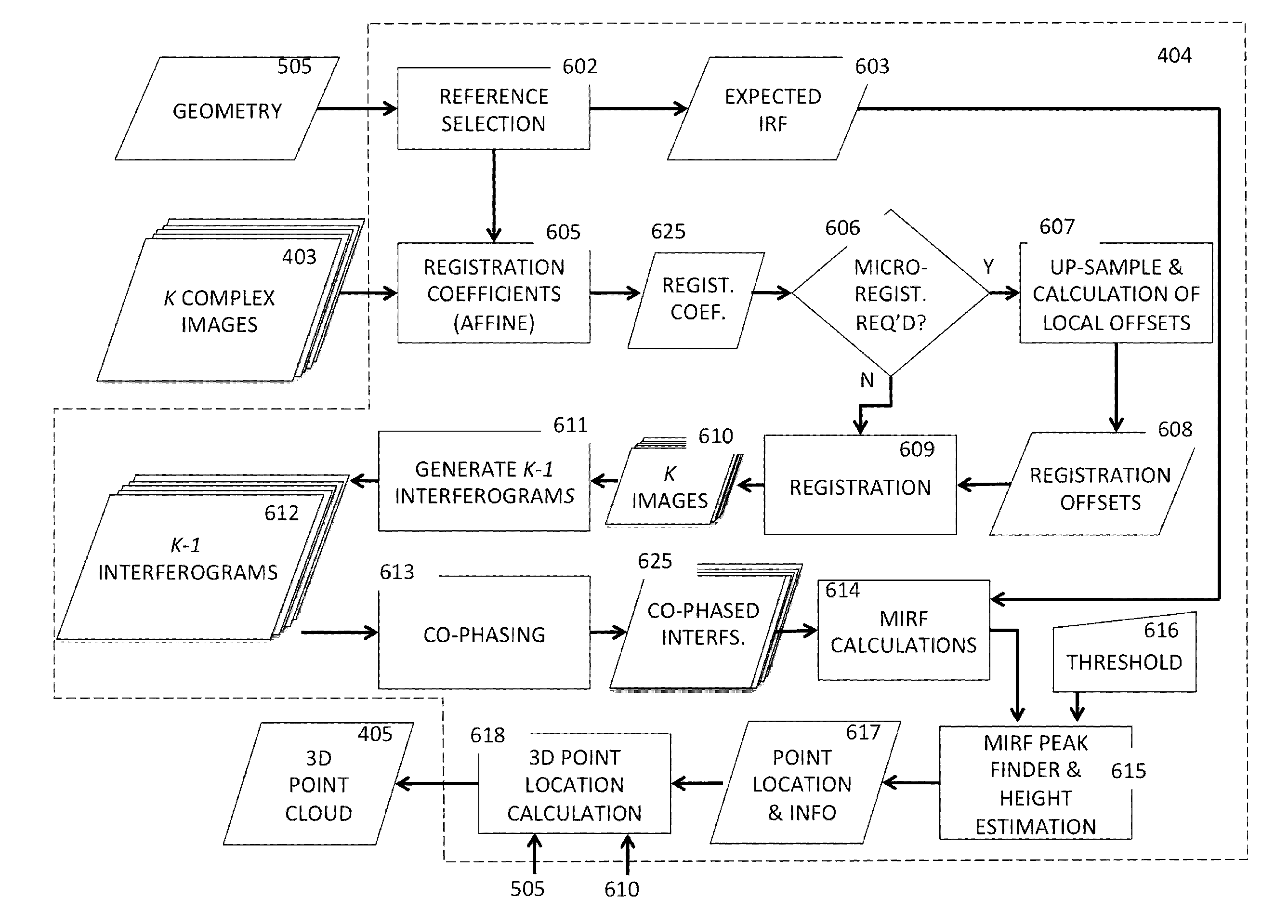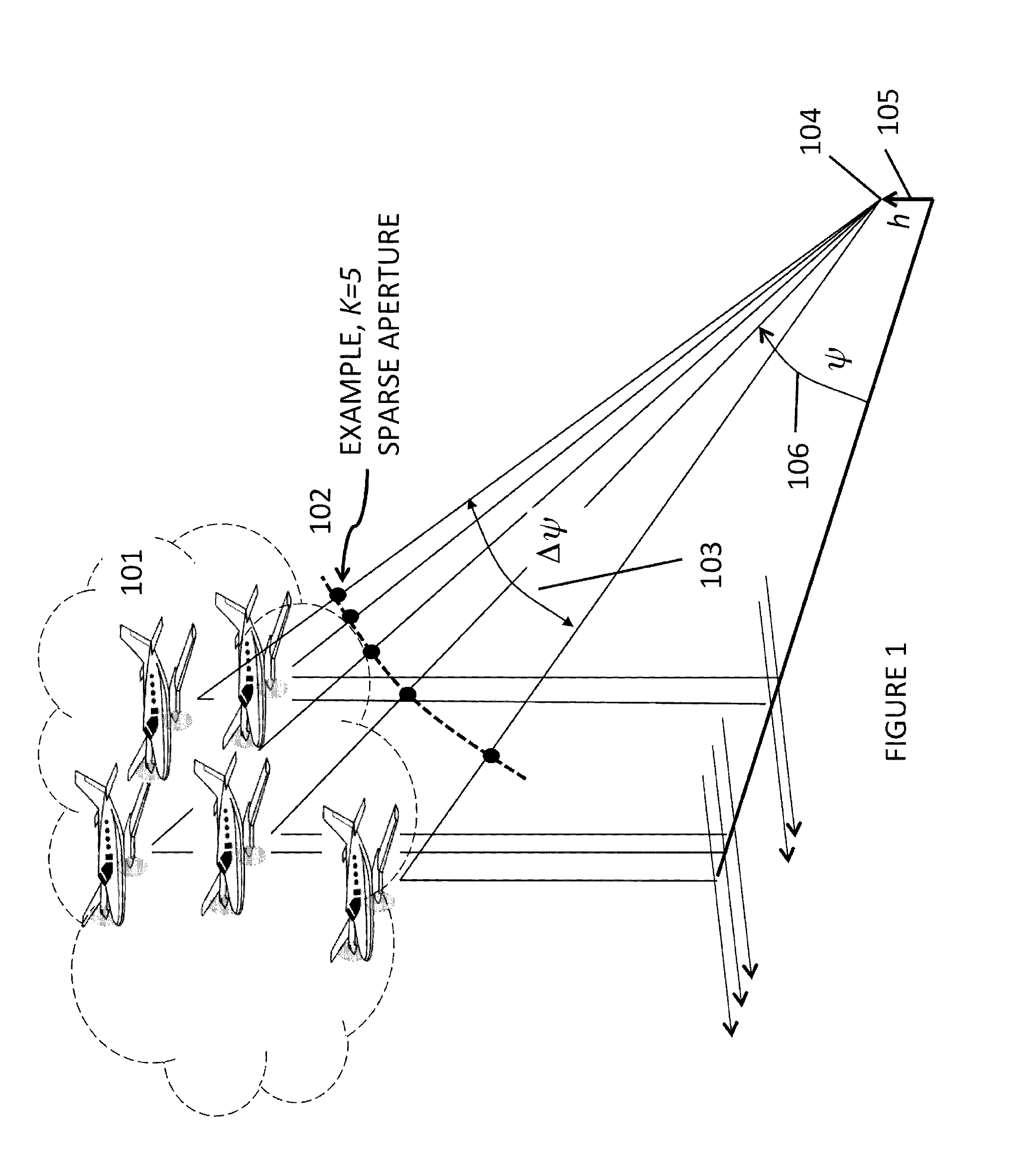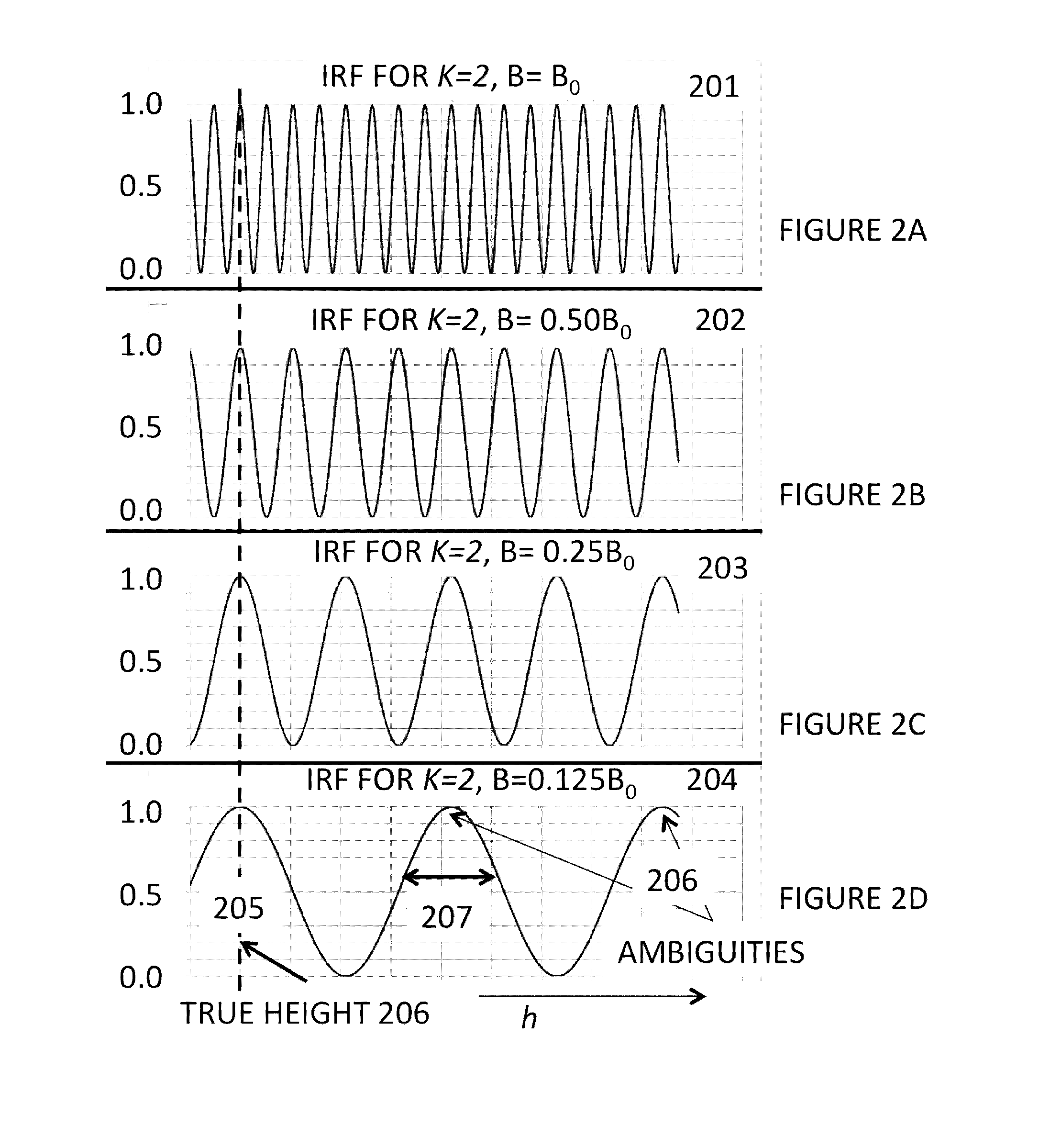SAR Point Cloud Generation System
a generation system and point cloud technology, applied in the field of sar point cloud generation system, can solve the problems of inability to robustly repair, inability to accurately determine the elevation of the phase, and inability to accurately measure the noise of the phase measurement, so as to reduce the cost of the multi-aperture system, efficient collection and accurate, and high data quality
- Summary
- Abstract
- Description
- Claims
- Application Information
AI Technical Summary
Benefits of technology
Problems solved by technology
Method used
Image
Examples
Embodiment Construction
[0031]Referring to the drawing figures, FIG. 1 shows one version of a SAR Point Cloud collection system. Individual SAR systems flown in aircraft 101 (with suitable geometry as will be described herein) image to the side using synthetic aperture radar technology. The ensemble of SAR data acquired by the individual SAR systems, which may be acquired at the same time or at different times, form a sparse imaging aperture 102 which may be considered the input to the present invention. A geometric constraint such that the full angle 103 subtended by the sparse aperture from a point on the ground 104 elevated a distance h 105 above a reference plane, is well within a maximum angle required to maintain spatial coherence of the SAR echoes,
Δψmax=λ2ρg1sin(ψ),
where ρg is the SAR resolution on the ground plane and ψ106 is the average graze angle of all the SAR systems to the point on the ground. While it is possible to utilize the present invention with data acquired with larger apertures than ...
PUM
 Login to View More
Login to View More Abstract
Description
Claims
Application Information
 Login to View More
Login to View More - R&D
- Intellectual Property
- Life Sciences
- Materials
- Tech Scout
- Unparalleled Data Quality
- Higher Quality Content
- 60% Fewer Hallucinations
Browse by: Latest US Patents, China's latest patents, Technical Efficacy Thesaurus, Application Domain, Technology Topic, Popular Technical Reports.
© 2025 PatSnap. All rights reserved.Legal|Privacy policy|Modern Slavery Act Transparency Statement|Sitemap|About US| Contact US: help@patsnap.com



